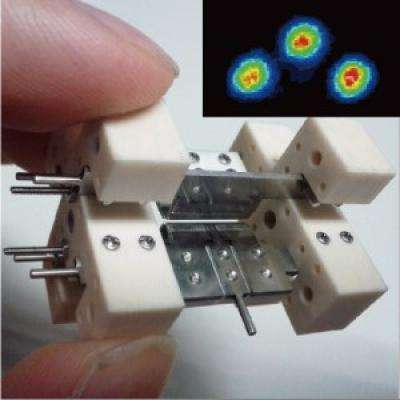Breakthrough paper on the Aharonov-Bohm effect published

Chapman University affiliated quantum physicist Yutaka Shikano, Ph.D., has published a milestone paper in the journal Nature Communications. The title of the article is "Aharonov-Bohm effect with quantum tunneling in linear Paul trap." The Aharonov-Bohm (AB) effect was proposed by Yakir Aharonov, who is the co-director of the Institute for Quantum Studies at Chapman University, and David J. Bohm in 1959.
The AB effect showed for the first time that a magnetic field inside a confined region can have a measureable impact on a charged particle which never traveled inside the region. This purely quantum effect, verified in a multitude of experimental set-ups, is at the heart of much of modern physics. In 1986, Akira Tonomura and his coworkers used electron holography (which is a key technology behind the electron microscope) to empirically prove the existence of the Aharonov-Bohm effect.
Another aspect of quantum theory is "tunneling," a phenomenon in which a particle can go places where it is not allowed to go classically, and a fundamental component of the Nature paper. Applications of tunneling include nuclear fusion, the diode used throughout electronics, and different types of microscopes. Although it has been observed on large scales, no one has yet actually measured the tunneling of a single particle until now. Yutaka Shikano, who is an affiliated member of the Institute for Quantum Studies at Chapman and a research associate professor at the Research Center of Integrative Molecular Systems (CIMoS), Institute for Molecular Science and the Urabe group of Osaka University observed this effect for the first time.
The experiment was performed at Osaka University using an ion trap system. Due to recent developments of quantum technology, the team was able to manipulate the ground state of an ion using laser cooling. They used three calcium ions arranged in a triangular structure. The observed tunneling was between the upward and downward triangular configurations. When they changed the strength of the magnetic field, it showed that the likelihood of a transition oscillated as originally predicted by the Aharonov-Bohm effect.
Co-Director of the Institute for Quantum Studies, Prof. Jeff Tollaksen commented: "Quantum theory is considered by many to be the most successful theory in history and has led to a profound understanding of the microscopic world of atoms. Theoretical physics has yielded the most significant benefits for our society at the lowest costs. Discoveries in fundamental physics often lead to new industries: from electricity to smartphones to satellites. Quantum physics resulted in technological advances that drive our economy, such as the entire computer revolution, electronics, and the nuclear power industry. In addition, it impacts many other disciplines such as genetics, medicine and mathematics. Experts therefore estimate that nearly half the wealth created in the 20th century arose from quantum physics. At the Institute, we're committed to producing the next generation of breakthroughs which will lead to the technology of the 21st century. Similarly, I'm sure this breakthrough of Prof. Shikano and co-authors will lead to many new applications, such as the ability to more carefully control a particle while it is tunneling."
More information: Aharonov–Bohm effect in the tunnelling of a quantum rotor in a linear Paul trap, Nature Communications 5, Article number: 3868 DOI: 10.1038/ncomms4868
Journal information: Nature Communications
Provided by Chapman University




















